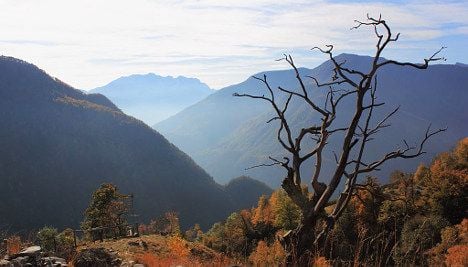Operators are desperately waiting for the first fall of flakes to draw in ski tourists who are putting off making their reservations just yet.
“It’s difficult to give an opening date, we are waiting to see if the snow arrives and if it’s cold enough to use the artificial snow machines,” said a spokesman for the southwestern Crans Montana resort.
The ski station, which notched up a million overnight stays last year, is suffering from the current snow drought in Switzerland and the Alps in general.
“We haven’t had any snowfall yet, but it’s too early to be defeatist about it,” the spokesman said.
Davos in the southeast has the same dilemma. The resort has managed to open seven of its 50 runs thanks only to snow machines.
“There was a bit of snow in October, but it didn’t last,” said a spokesman.
Dry air conditions brought by a massive anticyclone are behind the lack of the white stuff, according to Swiss forecasters.
The last rainfall was seen on October 16th, with Davos recording just 0.6 mm of rain through Autumn.
Not a flake has fallen at Arosa, a family resort in the eastern Grisons area, which usually enjoys about 25 centimetres of snow on its slopes from mid-November.
“A change will definitely occur in the middle of the week,” said an expert at Switzerland’s meteorological body Meteo Suisse.
“But it’s still too early to say how much snow is going to fall.”
The lack of snow is adding to an already difficult time for the country’s tourist industry, battered by the high cost of the Swiss franc.
The currency has gained about three percent on the euro and around four percent on the British pound, making stays at Swiss resorts all the more pricey.
Because 60 percent of Swiss hotel visitors are foreigners, half of them hailing from the eurozone, the Swiss government has taken measures to support the industry, with a 100 million-franc (€81.1 million) boost.
The Swiss tourist board has meanwhile spent four million francs promoting the country as a winter destination across the eurozone, Britain and Russia.
The resorts have also taken measures to attract foreign visitors, who are becoming all the more cautious as the debt crisis worsens.
Davos is offering a complimentary ski lift pass with each hotel reservation.
“Tourists want to be sure that the weather is going to be good and are reserving later and later,” said a spokesman at the resort, famous for the World Economic Forum taking place there every year.
At Crans Montana, the tourism office has also responded by offering big reductions on overnight stays.
“Reservations are beginning to pick up. But it’s snow that will prove the trigger” for the influx of skiers, a spokesman for the Valais resort said.




 Please whitelist us to continue reading.
Please whitelist us to continue reading.
Member comments